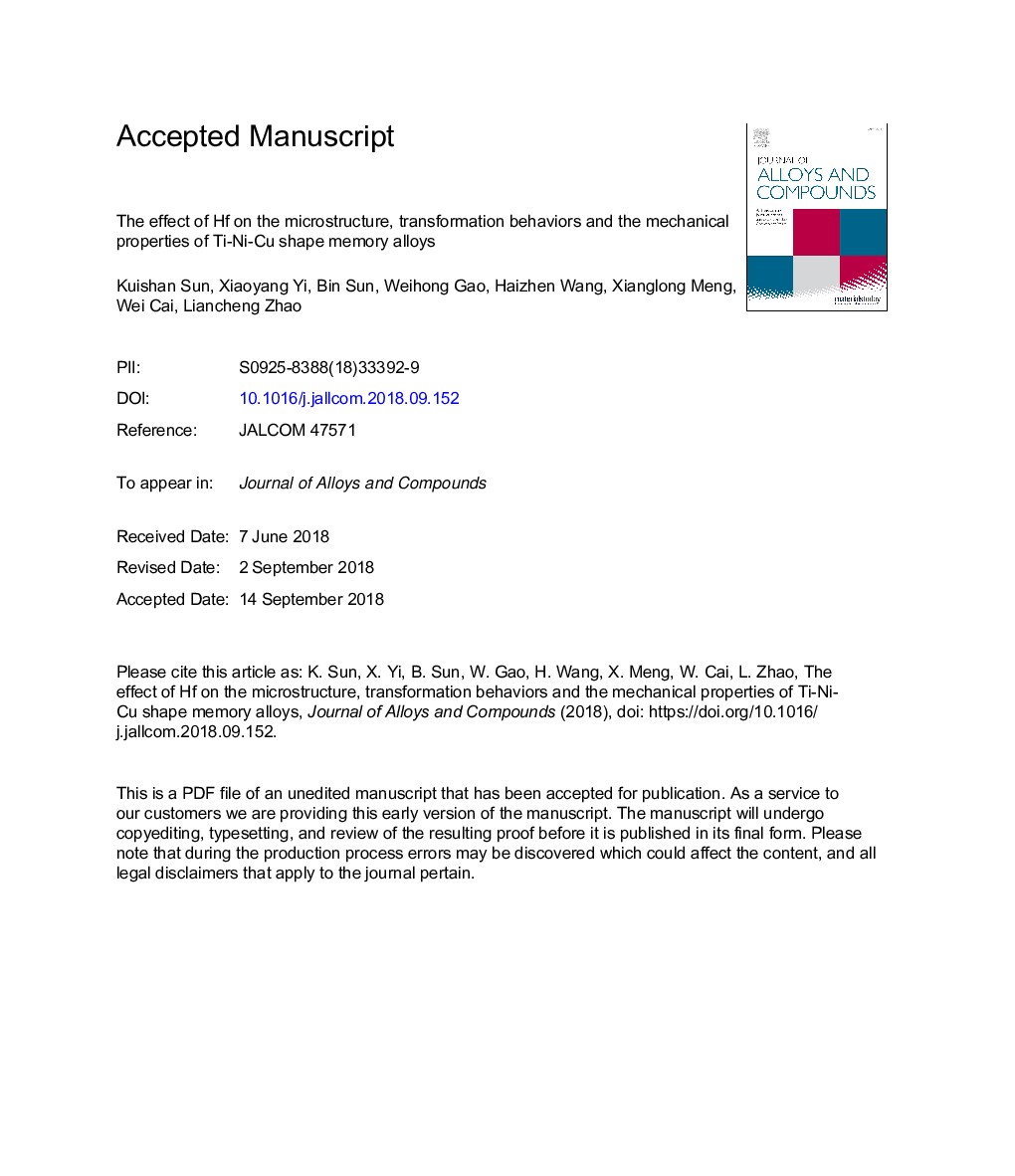| Article ID | Journal | Published Year | Pages | File Type |
|---|---|---|---|---|
| 10156000 | Journal of Alloys and Compounds | 2019 | 36 Pages |
Abstract
The effect of substitution of Hf for Ti and Cu for Ni on microstructure, martensitic transformation behavior, mechanical properties and strain recovery characteristic of quaternary Ti-Ni-Cu-Hf alloys were investigated systematically. The results reveal that the B19âB19â² martensite transformation can be controlled by tailoring the Hf contents in Ti-Ni-Cu alloys. Although the B19 and B19â² martensite coexisted in Ti-Ni-Cu alloys with the minor Hf addition, only one-stage B2âB19â² transformation was observed in heating and cooling process. The transformation temperatures and transformation hysteresis can be adjusted by optimizing the chemical composition. In addition, the superior mechanical properties and shape memory effect can be achieved by tailoring the Hf can Cu contents. The maximum shape memory effect strain of 3.06% could be obtained in Ti47Ni44Cu6Hf3 alloy. And Ti45Ni44Cu6Hf5 alloy showed the largest tensile strength of 770â¯MPa. The present study provided the theoretical foundation for the potential application of the Ti-Ni-Cu-Hf alloys.
Related Topics
Physical Sciences and Engineering
Materials Science
Metals and Alloys
Authors
Kuishan Sun, Xiaoyang Yi, Bin Sun, Weihong Gao, Haizhen Wang, Xianglong Meng, Wei Cai, Liancheng Zhao,
